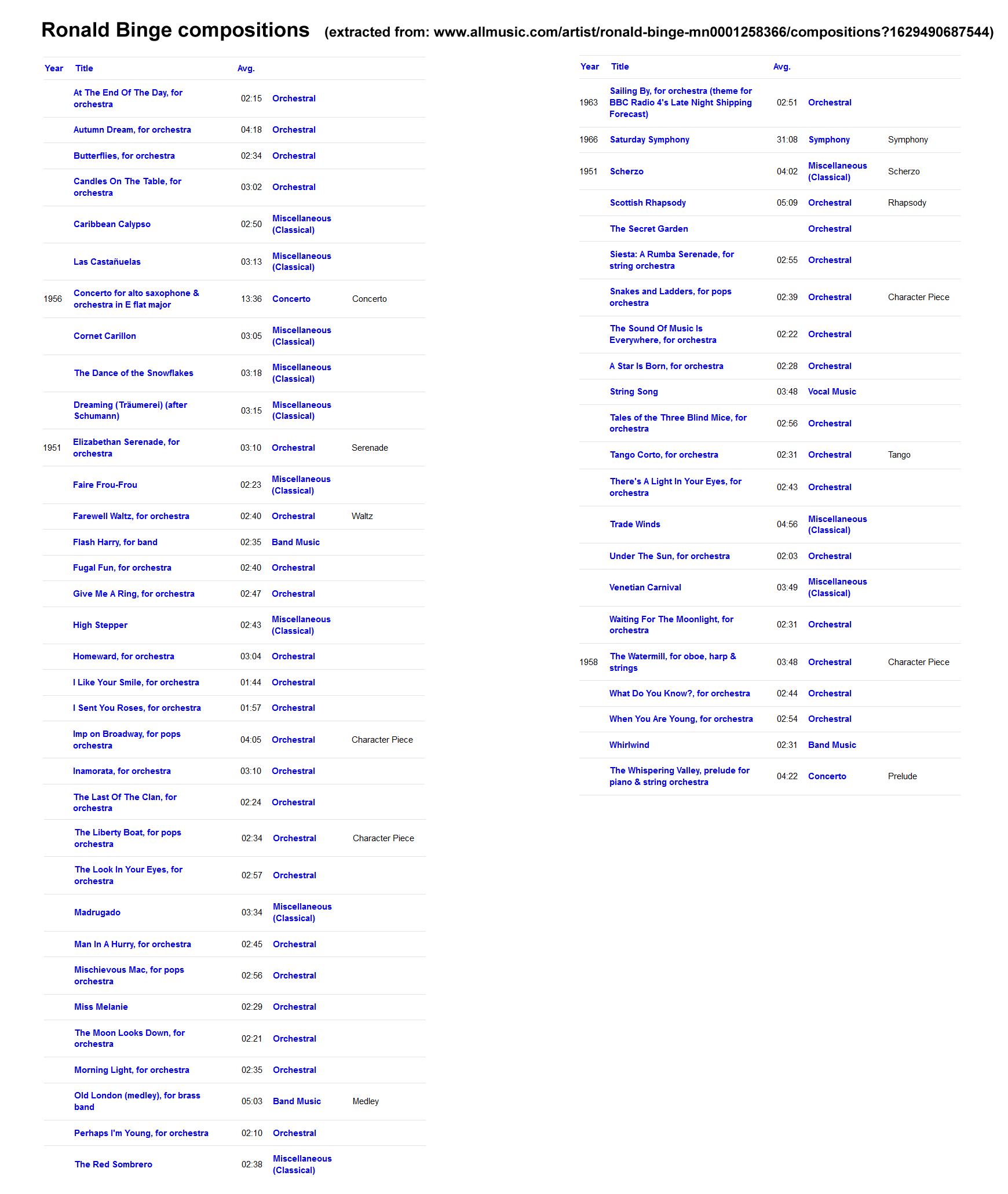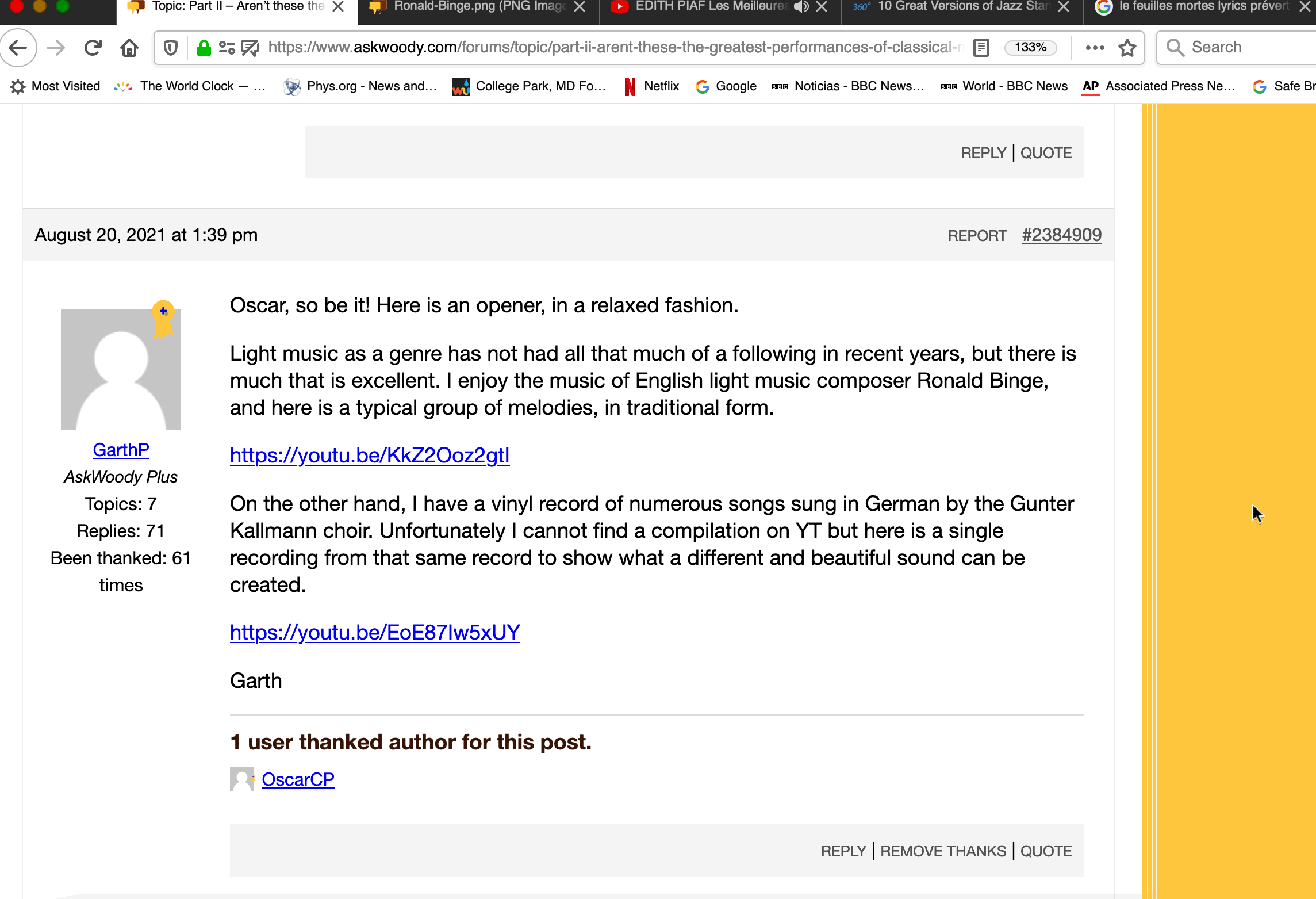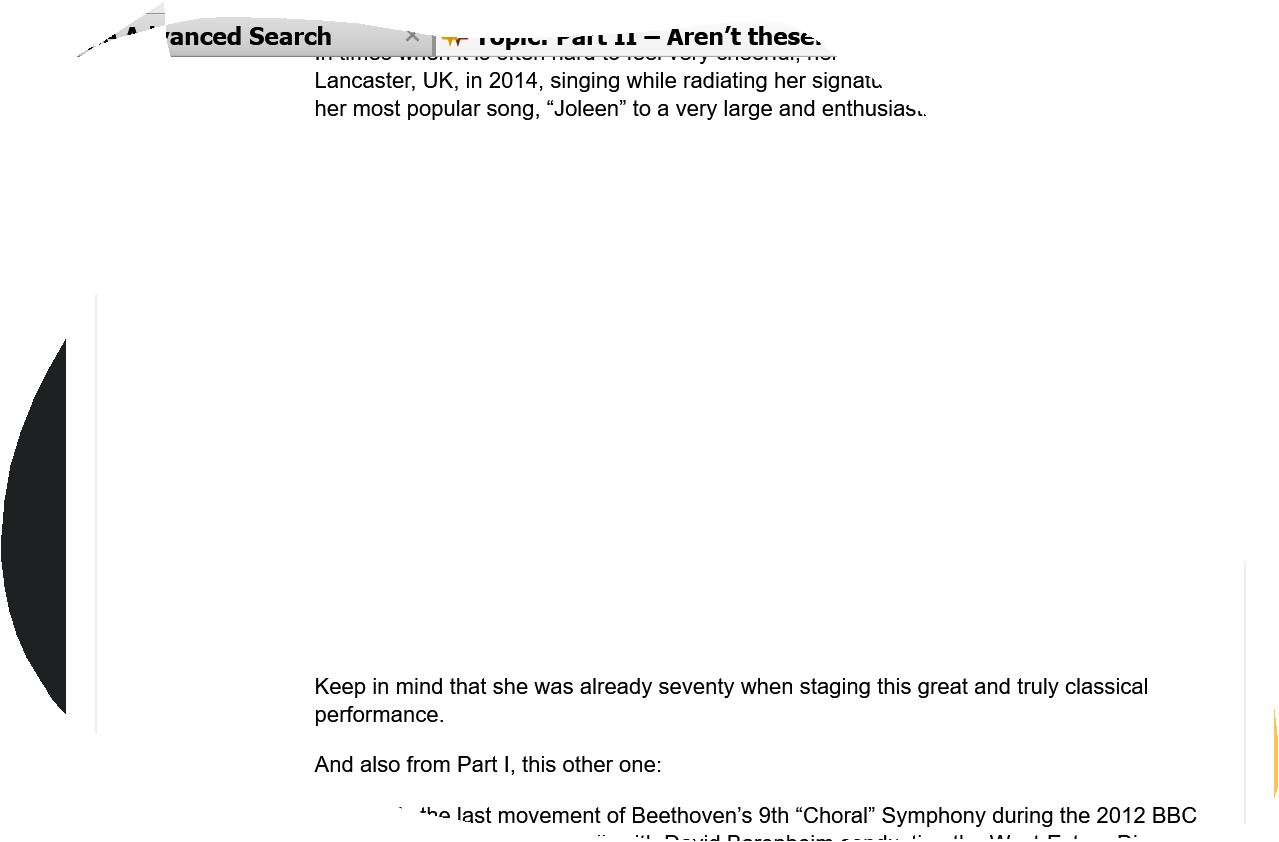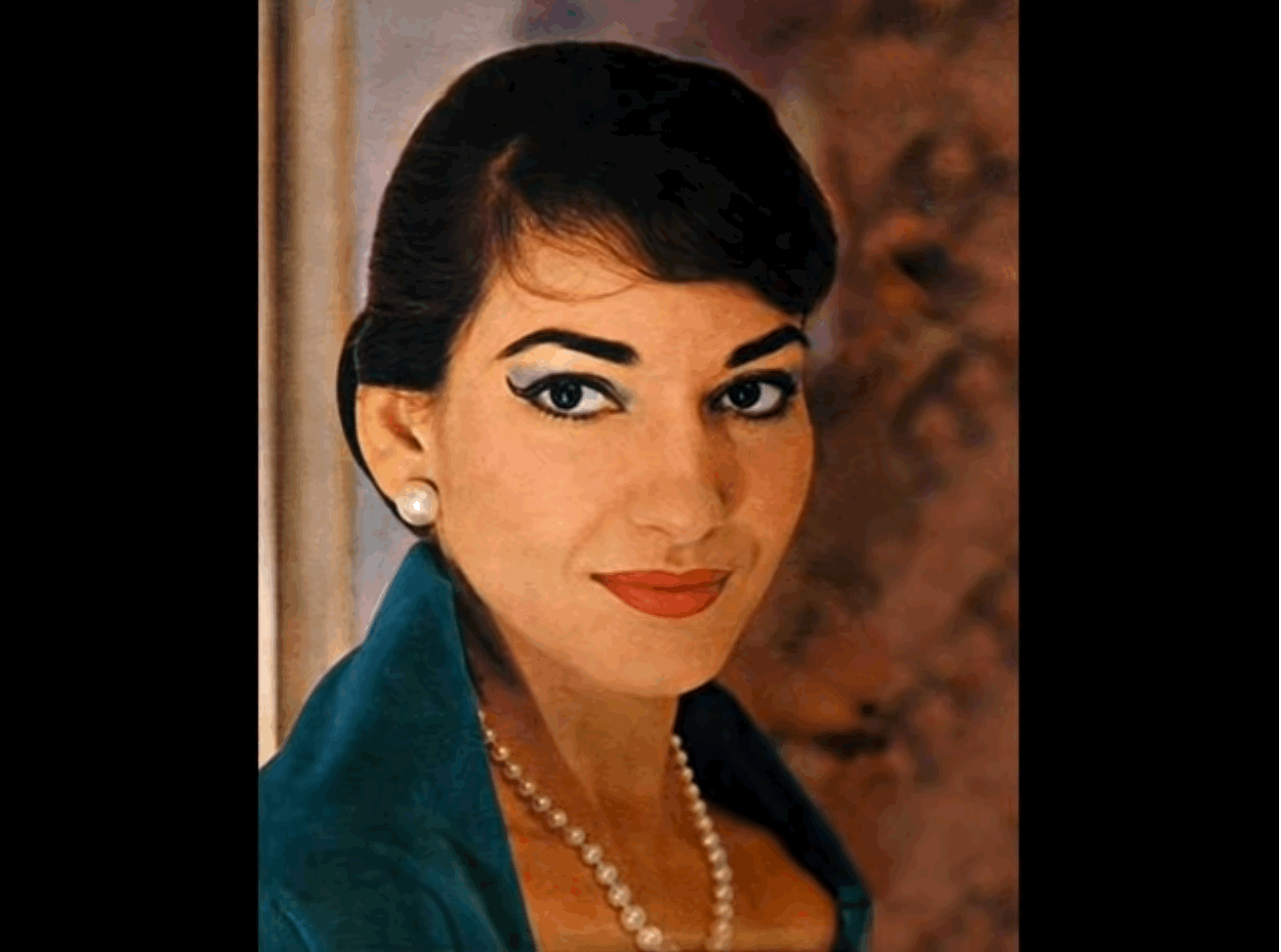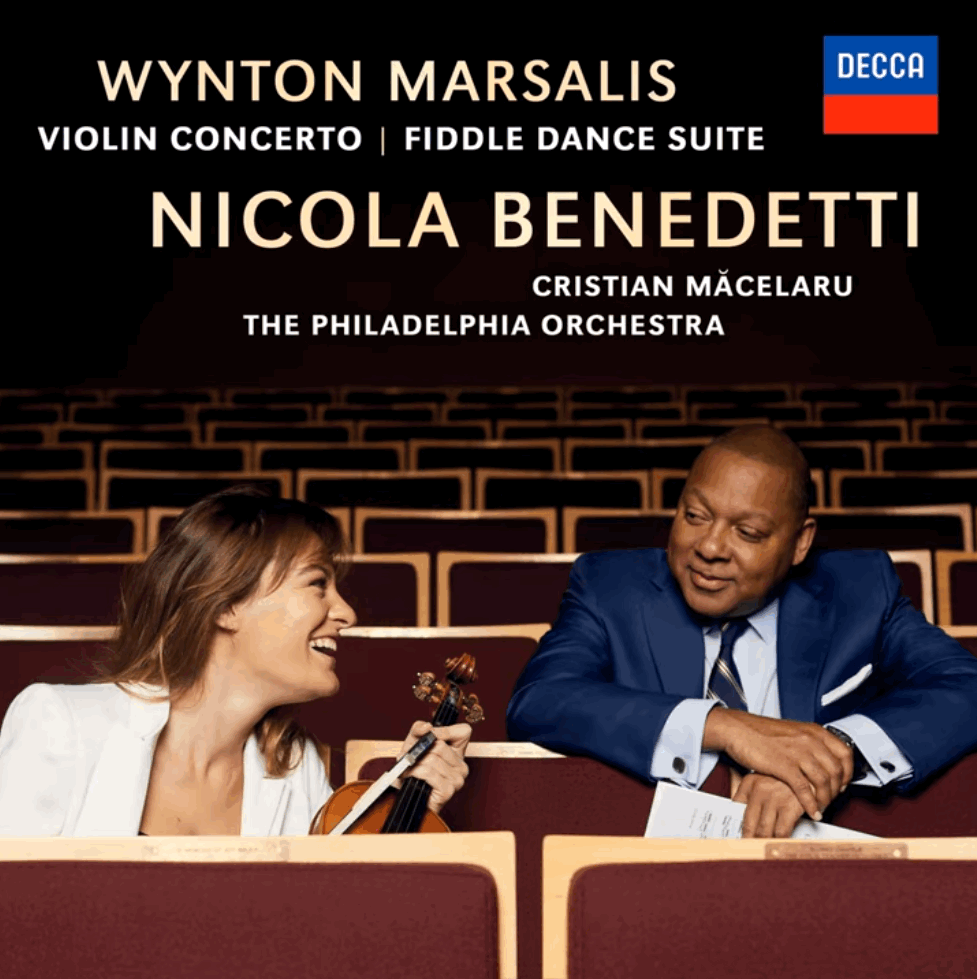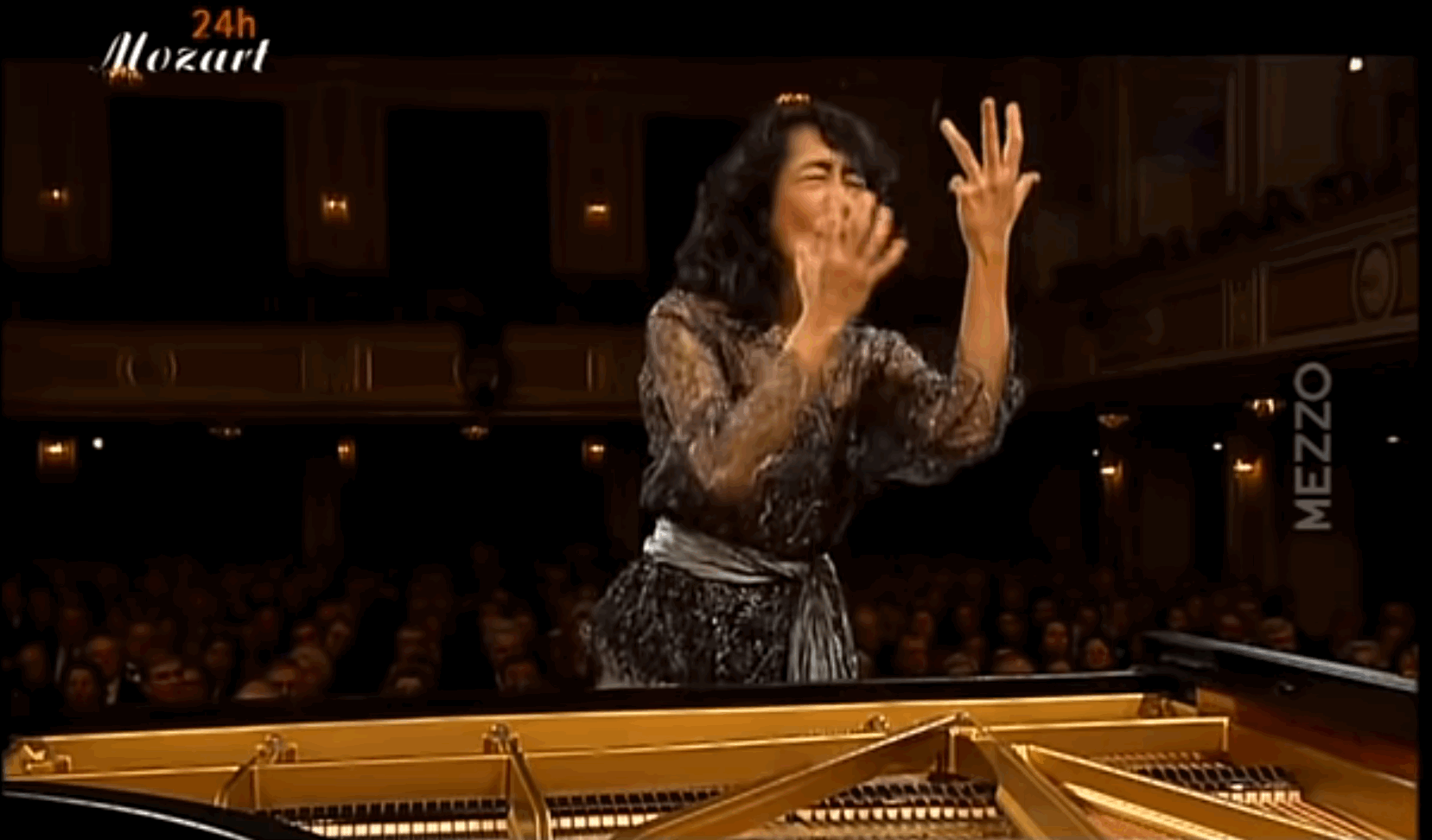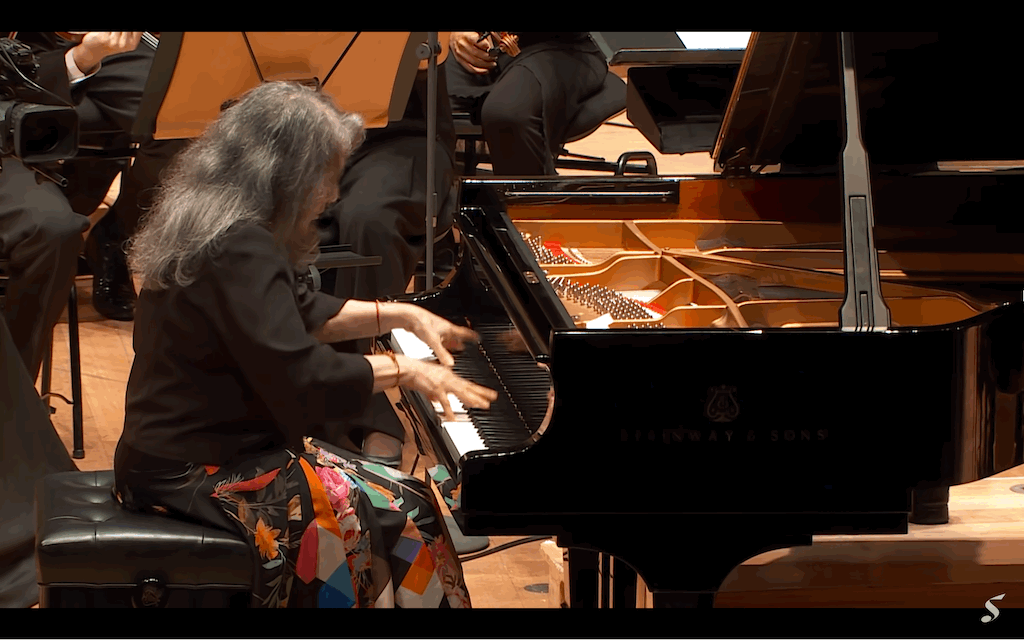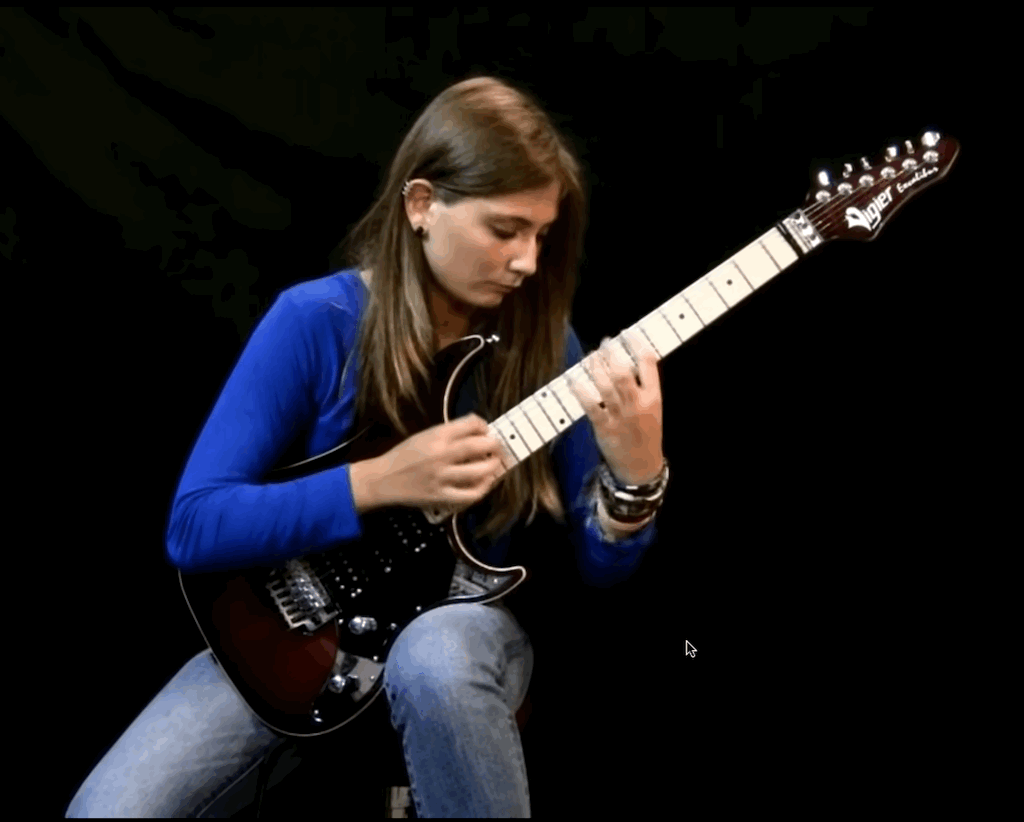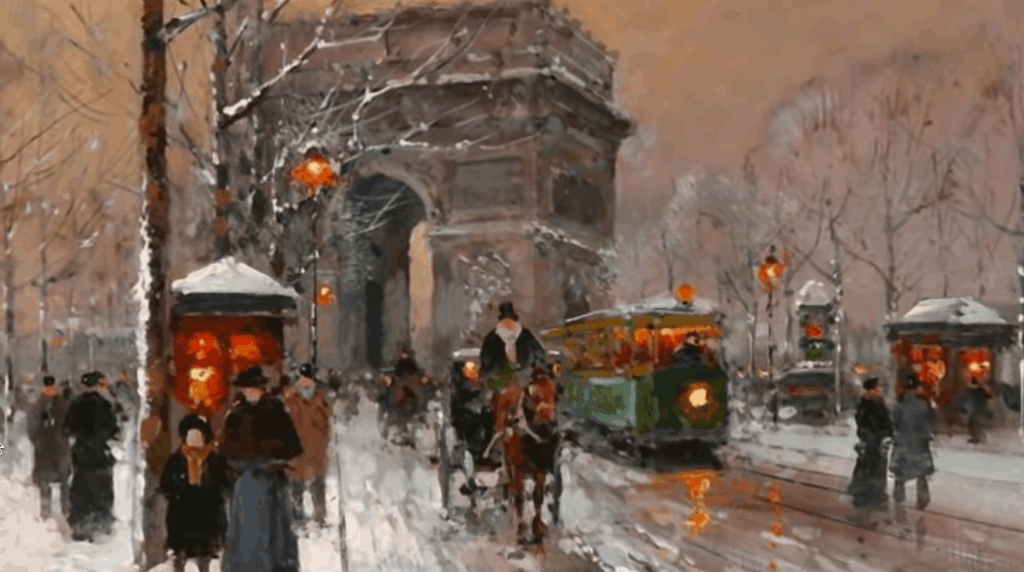This thread I start today is the continuation of one I begun in early 2020 and has by now hundreds of links to YouTube performances of some of the best Western classical music going back some four centuries, played by the very best performers of the last 120 years, since music started to be recorded in ways that we can still appreciate today. Although “classical” has not meant exclusively “music performed at concert halls by symphonic orchestras, chamber ensembles, choruses, great opera singers and solo instrument virtuosos”.
The cause of the split is that the thread was getting quite long, with well over 500 comments containing each one or more links to YT performance videos, and Susan was quite determined that it needed to be split. She has allayed considerably my worry that splitting the thread would condemn the first part to oblivion once it went out of sight into the back pages, and in a short time. She has moved to prevent this by pinning it as one of those yellow-background entries in “New Posts” where recent comments are listed and linked, so it will not disappear from sight. Also by adding “Part I” to the title of the old thread, at my request.
The music commented and linked in Part I, as it shall continue to be the case here, in Part II, has ranged from works by J.S. Bach, Mozart and Beethoven to those by Messien, Stravinsky, Schoenberg and Zoltán Kodály. Adding to all that those of the Greats of Jazz, Fusion, Bossa Nova, Progressive Tango, Rock, Country, movies (e.g. Morricone and Korngold) and Rhythms and Blues, from such greats as Ray Charles or Aretha Franklin, to our very own USA National Treasure, Dolly Parton.
Contributing comments to “Part I”, with the participation of other music lovers of similarly somewhat eclectic preferences, has been a task of love, one that I hope it has not only provided some real pleasure, but also some solace in difficult times to those visiting it. And helped as well those interested in learning more about this truly monumental and invaluable heritage of humanity: music.
I certainly have learned quite a lot about music while preparing to write my comments and by reading those made by others. And I hope we all may continue to do so in this new thread, “Part II”, that I hereby kick off now.
And how best to kick off this continuation of “Classical” with tree classic performances by some great artists of our very days:
First this one, from Part I, that I copy here in part:
In times when it is often hard to feel very cheerful, here is she at the Glastonbury Festival in Lancaster, UK, in 2014, singing while radiating her signature warm smile what is probably her most popular song, “Joleen” to a very large and enthusiastic audience:
https://www.youtube.com/watch?v=nwBNBcFAFso
Keep in mind that she was already seventy when staging this great and truly classical performance.
And also from Part I, this other one:
So here is the last movement of Beethoven’s 9th “Choral” Symphony during the 2012 BBC Proms at London’s Albert Hall, with David Barenboim conducting the West-Estern Divan Orchestra and soloist singers Anna Samuil (soprano) Waltraud Meier (mezzo-soprano) Michael König (tenor) René Pape (bass), with the National Youth Choir of Great Britain. A performance also noticeable for the youth of the musicians and members of the chorus:
https://www.youtube.com/watch?v=ChygZLpJDNE
In it, the words of the “Ode to Joy” by the poet Friedrich Schiller, sang by the huge choir and the four soloists, is also translated from German to English in the subtitles.
Finally, This is Bach’s monumental “Chaconne”, the last movement of the Partita No. 2 for solo violin, played here by my favorite violinist of the last two decades in her breakthrough recording, when she was 16 or 17 years old and still had a magnificent international career ahead of her.
https://www.youtube.com/watch?v=ngjEVKxQCWs
(Please, leave these “Picture links” in this first opening comment, as it was the case in the opening comment of Part I.)
Ex-Windows user (Win. 98, XP, 7); since mid-2017 using also macOS. Presently on Monterey 12.15 & sometimes running also Linux (Mint).
MacBook Pro circa mid-2015, 15" display, with 16GB 1600 GHz DDR3 RAM, 1 TB SSD, a Haswell architecture Intel CPU with 4 Cores and 8 Threads model i7-4870HQ @ 2.50GHz.
Intel Iris Pro GPU with Built-in Bus, VRAM 1.5 GB, Display 2880 x 1800 Retina, 24-Bit color.
macOS Monterey; browsers: Waterfox "Current", Vivaldi and (now and then) Chrome; security apps. Intego AV

